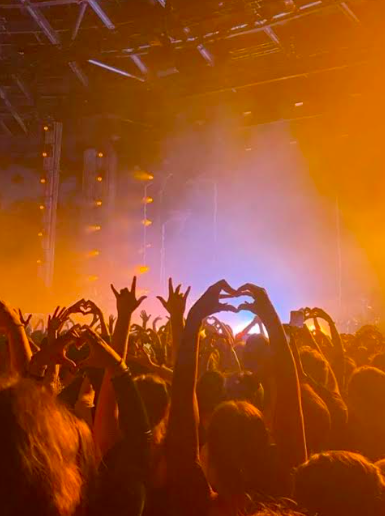
By Sinead Armstrong
In 2015, music felt alive. You couldn’t walk through a shopping centre or scroll through Instagram without hearing a chorus you actually wanted to scream. The media was a rotating reel of joy. There was Uptown Funk, Hotline Bling, Can’t Feel My Face, Love Me Like You Do. Everything was big, colourful, and a bit ridiculous. After all, they say, “go big or go home.” Artists cared about hooks and personality. The charts felt like a shared universe where pop, R&B, and hip-hop collided in a pool of confidence and fun.
Now, a decade later, the shine has dulled. The world has grown heavier, and the music followed suit. The choruses that once made us leap from our seats have been replaced by soft, sad soundscapes. They are now tracks made to study to, cry to, scroll to. In 2015, everything was a party; we couldn’t wait to live while being young, and now, in 2025, it just feels like an after-hours whisper. It’s not that today’s music is bad; it’s that it’s cautious, careful, and safe. Instead of announcing its presence unabashedly, it hides amongst the mediocrity of calmness. It hovers instead of soars, murmurs instead of belts, it soundtracks our exhaustion rather than providing us an escape from it.
Pop stars once felt like constellations. They were distant, dazzling, and untouchable. Rihanna, Swift, Drake, The Weeknd, each name carried an aura and a sense of unreachable drama. Now, the modern artist must be accessible, relatable, and perpetually online. They are influencers first, musicians second. The mystique is gone; they are just like us. The spectacle, which made us gawk at our screens, has been traded for “authenticity,” a word that in itself has become its own performance. Songs are made not for radio or TV, but for algorithms; they are made for playlists titled vibes, sad girl autumn, and main character energy.
The shift in music isn’t accidental. Streaming has reshaped music from the inside out. To survive the skip button, songs must hook the listener within seconds. Three-minute tracks are indulgent; two-minute ones are safe. The bridge that was once a space for emotion to swell and bleed has been cut to make room for the chorus to loop over and over. Perfection has replaced passion. Every note is cleanly cut and efficient. The recipe for perfection. It’s pop music created to not offend, not surprise, not lose you.
Even concerts feel different. Where crowds once screamed and danced until their voices were lost, they now hold their phones high, only to capture evidence that they were there instead of truly being there. Music used to mean community. A shared heartbeat pulsing through speakers and bodies alike. Now it’s solitary, fed to us through earbuds, optimised for attention spans shorter than the intros of the songs we belted ten years ago.
But maybe the problem isn’t only the music. Maybe we’ve changed, too. The world is more anxious, more fragile, more fatigued. Songs have become softer because we have. The joy of 2015 belonged to a generation that was still hopeful enough to shout about it. In 2025, the mood is quieter. Reflective, restrained, maybe even resigned.
Still, sometimes, when a 2015 song sneaks onto shuffle, and “What Do You Mean” fills our ears, something connects—a spark. The rhythm from a simpler time, and for a fleeting moment, we remember what it felt like to sing without irony, to dance without cringing, to listen without thinking. For a fleeting moment, music is fun again.